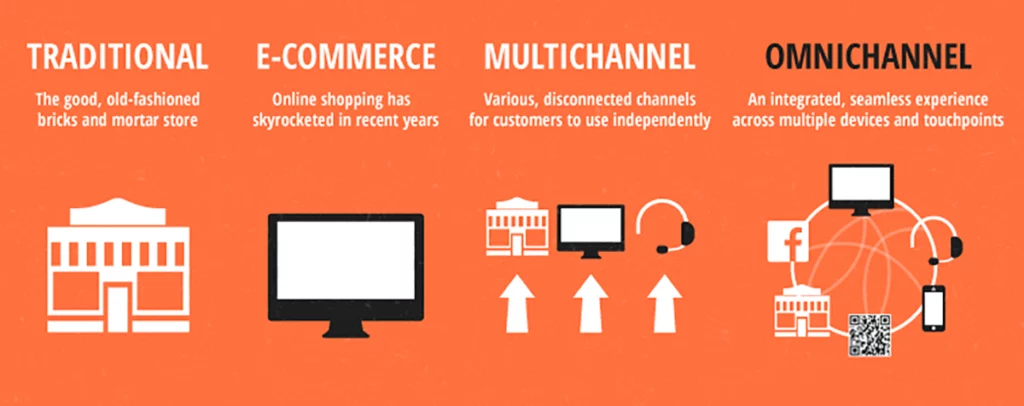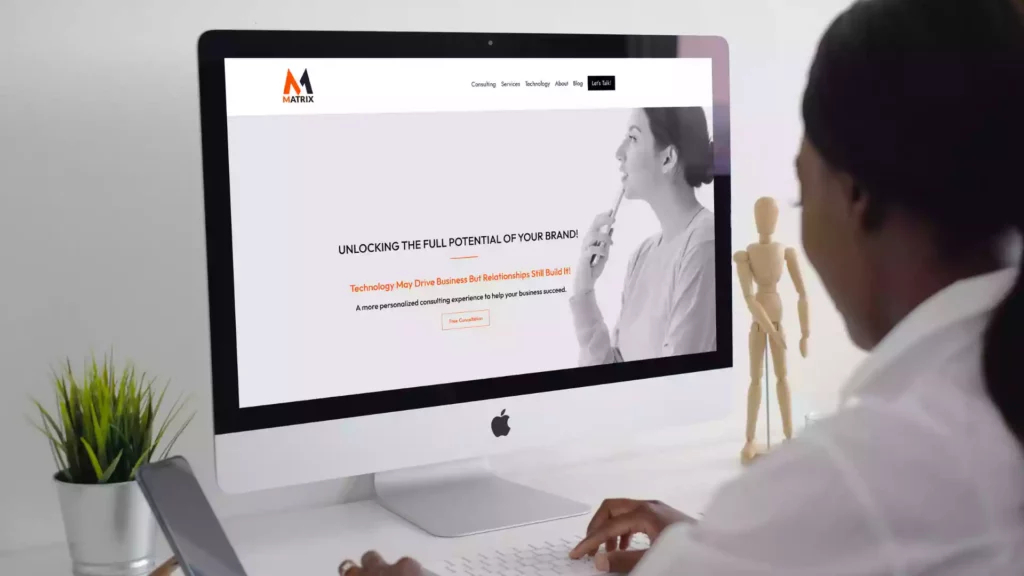Omnichannel Marketing With HubSpot: 7-Point Step-by-Step Guide
Steal this 7-Point Step-by-Step Guide to Omnichannel Marketing for HubSpot.
Omnichannel Marketing has quickly become one of the most efficient and effective ways to reach customers.
By using multiple channels to interact with them, such as email, phone, chat, social media, and more, you create a cohesive customer experience that is both convenient and consistent.
HubSpot is one of the leading marketing automation platforms. It can help you easily create and manage your Omnichannel Marketing campaigns. In this 7-point step-by-step guide, we’ll show you how!
Omnichannel Marketing is one of the most efficient and effective ways to reach customers, and for those who understand the process, it has real omnichannel meaning.
By using multiple channels to interact with them, such as email, phone, chat, social media, and more, you create a cohesive customer experience that is both convenient and consistent.
HubSpot is a leading marketing automation platform that can help you easily create and manage your omnichannel marketing campaigns. In this 7-point step-by-step guide, we’ll show you how!
Sign up for HubSpot today and learn how to create successful Omnichannel Marketing campaigns! 10 Most In-Demand Types of SEO Services to Focus On in 2025
Is Your Marketing Stack Leaving Money on the Table?
Your disconnected tools see pieces of the puzzle. A unified AI platform sees the whole picture. Enter your metrics to quantify the impact of switching to MatrixLabX.
Your Current Metrics
Core Business Inputs
1. Searching
2. Streaming
3. Scrolling
4. Shopping
Your Performance Transformed
| Metric | Your Platform | MatrixLabX | Monthly Lift |
|---|
Total Estimated Annual Gain
$0
from improved conversions and recovered revenue
Problems for CMOs in CPA Firms about a connected customer experience
Omnichannel Marketing is one of the most efficient and effective ways to reach customers.
By using multiple channels to interact with them, such as email, phone, chat, social media, and more, you create a cohesive customer experience that is both convenient and consistent.
However, some major problems for CMOs in CPA firms are regarding creating a connected customer experience. One of the biggest challenges is that each customer interaction is treated as a separate event rather than part of a larger whole. This can lead to inconsistency and confusion among customers as they navigate various channels to obtain the help they need.
Another challenge is that CMOs often lack access to all the data they need to create a truly connected customer experience. This can make tracking customer interactions across different channels and coordinating them into a single cohesive strategy difficult.
CMOs in CPA firms frequently struggle with coordinating and communicating between different departments. This can lead to a fragmented customer experience and a lack of coherence across different channels.
Overall, CMOs in CPA firms face many challenges in creating a connected customer experience. However, with the right tools and strategies in place, it is possible to overcome these challenges and create a successful Omnichannel Marketing campaign.
- The Learning Curve and New Skills
- Changes in Buyer Behavior and Perceptions
- Your People Capital
- The Relentless Demand for New Content
- Automation to eliminate waste
Why should the CEO care about the customer experience?
The CEO should prioritize the customer experience because it is crucial to the company’s success. By delivering a positive customer experience, the CEO can ensure that customers are satisfied with their purchases. This, in turn, can lead to more sales and a stronger brand image.
Additionally, the CEO should prioritize the customer experience because it reflects the company’s overall quality. A poor customer experience can reflect badly on the company and damage its reputation.
Ultimately, the CEO should prioritize the customer experience because it is a key factor driving business growth. By improving the customer experience, the CEO can help to increase sales and revenue for the company. AI Agentic Systems for Marketing Healthcare Organizations
What is Omnichannel Marketing

Omnichannel marketing is the practice of using multiple channels to reach and engage customers. It aims to create a seamless and cohesive customer experience regardless of how or where customers interact with your brand.
In today’s digital world, customers expect a consistent experience across online and offline channels. In the past, businesses used separate marketing channels to reach their target audience. They might use email to communicate with leads and prospects, relying on brick-and-mortar stores for sales.
To meet these expectations, businesses must adopt an omnichannel marketing plan. Omnichannel marketing enables you to reach customers across multiple channels, including email, social media, phone, and web, while providing a consistent experience throughout the customer journey.
The Benefits of Omnichannel Marketing

There are several benefits of omnichannel marketing:
1. Increased Customer Engagement: Omnichannel marketing enhances customer engagement by delivering a seamless and cohesive experience across all touchpoints. This integrated approach helps you build deeper relationships with your customers and encourages them to return for more.
2. Greater Customer Insights: Omnichannel marketing also provides you with deeper insights into your customers. You can better understand customer needs, wants, and preferences by tracking customer interactions across all channels. This enables you to tailor your marketing messages and strategies to meet their needs better.
3. Improved Customer Retention: Omnichannel marketing can also help you improve customer retention. By providing a consistent, integrated experience, you can keep your customers happy and engaged with your brand. This leads to longer-term relationships and repeated business.
4. Increased Sales and Revenue: Omnichannel marketing can help you boost sales and revenue by generating more qualified leads that move through the sales funnel. By providing a seamless customer experience, you can encourage prospects to take the next step in their buyer’s journey – making a purchase, signing up for a free trial, or requesting more information.
How to Implement Omnichannel Marketing

There are several steps you need to take to implement an omnichannel marketing plan:
- Define Your Customer Segments: The first step is identifying your customer segments. To achieve this, consider demographics, psychographics, and behavior. This will help you determine which channels to use and what messages to share with each segment.
- Identify Your Channels: The next step is determining your channels to reach your target audience. These might include email, social media, your website, paid advertising, and more. Once you have identified your channels, you must create separate strategies.
- Create Compelling Content: Next, you must create content that resonates with your target audience’s needs and interests. This content should guide prospects through the sales funnel, from awareness to consideration to purchase.
- Implement Tracking and Reporting: To effectively track and measure your omnichannel marketing efforts, you must implement tracking and reporting tools. These tools will help you understand which channels are performing well and which need improvement. Additionally, they’ll allow you to track your ROI and adjust your strategy as needed.
- Evaluate and Optimize Your Strategy: Regularly evaluate and optimize your omnichannel marketing strategy. This will help you utilize the most effective channels and messages to reach your target audience and continually improve your results over time.
HubSpot is one of the leading marketing automation platforms. It can help you easily create and manage your Omnichannel Marketing campaigns. In this 7-point step-by-step guide, we’ll show you how!
Why is Omnichannel Marketing Important
An omnichannel strategy and attribution model are essential to marketing managers because they enable them to drive consistent customer experiences, optimize spend across channels, and prove ROI — all critical to sustaining and scaling modern marketing programs.
Here’s a breakdown of why both matter:
Why Omnichannel Strategy Matters
Marketing today is nonlinear — buyers bounce between search engines, social feeds, websites, emails, videos, and retail touchpoints. An omnichannel strategy ensures you’re present consistently across all those touchpoints and orchestrating them intelligently.
Key Benefits:
- Seamless customer experiences: Messaging stays consistent whether the customer is on Instagram, YouTube, your website, or talking to sales.
- Higher engagement: Unified journeys convert better than isolated channel bursts.
- Improved retention: Customers who interact across multiple channels have higher lifetime value.
- Competitive advantage: Brands that connect the dots stand out in fragmented media environments.
Why Attribution is Critical
Attribution tells you what’s working and what’s not. Without it, you’re just guessing where your leads and revenue come from — and how to invest future budget.
Key Benefits:
- Optimize spending: Decide whether to double down on SEO, LinkedIn Ads, YouTube, and email nurture or pull back.
- Justify budget decisions: Show leadership the hard data connecting marketing efforts to pipeline and revenue.
- Improve campaigns: Learn which combinations of touchpoints convert (e.g., search + webinar + sales email).
- Move beyond last-click bias: Proper attribution helps uncover upstream influencers like video or social that assist conversions even if they’re not the final touch.
Strategic Impact for Marketing Managers
| Challenge | How Omnichannel + Attribution Help |
|---|---|
| Fragmented user journeys | Creates cohesion across all touchpoints |
| Budget waste | Reveals true performance by channel |
| Internal pressure to prove ROI | Quantifies marketing’s influence on revenue |
| Scaling personalization | Enables consistent messaging tied to behavior |
| Tactical vs. strategic marketing | Shifts from siloed efforts to holistic orchestration |
Bottom Line
Marketing managers who master omnichannel orchestration and attribution modeling become strategic leaders, not campaign executors. They drive predictable growth, smarter investments, and cross-functional alignment.
Many customers today interact with brands through multiple channels, often simultaneously. This can include interacting with a brand through their website, social media, phone, chat, and more. To deliver a consistent and cohesive customer experience across all channels, businesses must implement an omnichannel marketing strategy.
Omnichannel marketing has several benefits, including increased customer engagement, greater customer insights, improved customer retention, increased sales and revenue, and more. Businesses can better understand customers’ needs and preferences by using multiple channels to interact with them and tailoring their marketing messages and strategies accordingly.
Implementing an omnichannel marketing strategy can be daunting. You must define your customer segments, identify your channels, create compelling content, implement tracking and reporting tools, evaluate your strategy, and continually optimize it.
How can Omnichannel Marketing help your business?
Omnichannel Marketing can help your business in many ways. First, it can help you increase customer engagement. Using multiple channels to interact with customers allows you to better understand their needs and preferences, and tailor your marketing messages and strategies accordingly. This can lead to increased sales and revenue and improved customer retention.
Additionally, omnichannel marketing can help you better understand your customers. By tracking and measuring customer interactions across all channels, you can glean valuable insights into their behavior and preferences. This information can be used to improve your marketing campaigns and create more effective content.
Finally, omnichannel marketing can help you improve customer satisfaction and loyalty. Customers with a positive experience with your brand across all channels are more likely to be loyal and return for future purchases. Additionally, they may recommend your business to others.
What are some of the challenges of implementing an Omnichannel Marketing strategy?
One of the main challenges of implementing omnichannel marketing is ensuring that all channels work together seamlessly. This can be difficult to achieve, as each channel has unique features and capabilities. Additionally, businesses must ensure that their content is consistent across all channels and that they have accurate tracking and reporting tools in place to measure performance effectively.
Another challenge of omnichannel marketing is managing customer data. With numerous channels to track, keeping track of customer interactions and preferences can be challenging. Additionally, businesses must ensure customer data is securely stored and protected from unauthorized access.
Ultimately, businesses must be prepared for the increased workload of implementing an omnichannel marketing plan. Additional staff may be needed to manage the additional channels, and marketing efforts must be coordinated across all channels.
How can you overcome these challenges?
There are several ways to overcome the challenges of implementing an omnichannel marketing strategy. First, businesses can ensure that all channels work seamlessly by using a marketing automation platform like HubSpot. This will help you easily create and manage campaigns across all channels, ensuring consistent content, tracking, and reporting tools.
Businesses can also manage customer data using a customer relationship management (CRM) system. A CRM system will help you track customer interactions and preferences across all channels, making segmenting customers into different groups easier.
Finally, businesses can prepare for the increased workload by training staff members on using the new channels and coordinating marketing efforts across all channels. By doing so, businesses can ensure that they provide a consistent, cohesive customer experience.
What type of business should use omnichannel marketing?

Any business seeking to enhance customer engagement, gain a deeper understanding of its customers, and improve customer satisfaction and loyalty should utilize omnichannel marketing.
Businesses can better understand customers’ needs and preferences by using multiple channels to interact with them and tailoring their marketing messages and strategies accordingly.
This can lead to increased sales and revenue and improved customer retention. Additionally, businesses can use information from omnichannel marketing to improve their marketing campaigns and create more effective content.
How can you get started with Omnichannel Marketing today?
Getting started with Omnichannel Marketing can seem daunting, but it doesn’t have to be! This guide will show you how to easily set up your first campaign using HubSpot and some of the most popular channels.
1. Know your goals: Knowing what you’re trying to achieve is important. Are you looking to increase brand awareness, increase web traffic, or convert more leads into customers? Once you know your goals, you can tailor your campaigns to achieve them.
2. Choose the right channels: Not all channels are created equal- some will be more effective for your business than others. It’s essential to research which channels your customers are using and tailor your campaigns to those specific channels. You may also consider using a marketing automation platform like HubSpot to help manage your campaigns.
3. Create a customer journey map: A customer journey map is one of the best ways to create a cohesive customer experience across all channels. It outlines the stages a customer goes through when interacting with your business, from Awareness to Purchase and Loyalty. Creating a customer journey map ensures that each interaction is consistent and meets the customer’s needs.
4. Create targeted content for each channel: When creating content for your Omnichannel Marketing campaign, it’s important to target it specifically for each channel. Your customers will respond differently to content depending on their channel, so it’s important to tailor it accordingly. For example, if you’re running a social media campaign, your content should be concise and engaging, while email content can be more in-depth and longer.
5. Use responsive design: As more people use mobile devices to access the internet, it’s essential that your website is responsive and looks good on any device. With HubSpot’s responsive design tools, you can easily create a website that looks great on any device- no coding required!
6. Integrate with other channels: One of the benefits of Omnichannel Marketing is that it allows you to integrate with other channels easily. For example, you can easily connect your HubSpot account with Facebook to track leads from Facebook directly in HubSpot. This integration enables you to create a seamless customer experience and provides valuable insights into how they interact with your business across all channels.
7. Test and measure results: Like any marketing campaign, it’s important to test and measure the results of your Omnichannel Marketing campaigns. HubSpot’s reporting tools make it easy to track your progress and see which channels are performing best. By testing and measuring your results, you can fine-tune your campaigns to ensure they’re as effective as possible.
Omnichannel Marketing is a powerful way to reach your customers and achieve your marketing goals. By following these simple tips, you can easily start your first campaign today!
How HubSpot can help with Omnichannel Marketing

If you want to create an effective Omnichannel Marketing campaign, HubSpot can help. Our powerful marketing automation tools allow you to create and manage your campaigns across all channels easily. We also offer in-depth reporting tools enabling you to track your progress and identify which channels perform best.
Additionally, our integration with other channels makes it easy to connect with your customers. With HubSpot, you can create a cohesive customer experience that meets customers’ needs on their terms.
Ready to get started? Contact us today to learn more about how HubSpot can help with Omnichannel Marketing!
3 Examples of successful Omnichannel Marketing campaigns
1. Coca-Cola: Coca-Cola is a classic example of a brand that effectively utilizes omnichannel marketing. It has a strong social media presence, a responsive website, and even a mobile app. Coke also integrates with other channels, such as TV commercials and print ads. By utilizing multiple channels to interact with its customers, Coke has created a cohesive customer experience that meets their needs.
2. Apple: Apple is another brand that effectively utilizes omnichannel marketing. It has a strong presence on social media, a responsive website, and a mobile app. Apple also utilizes other channels, such as television commercials and print advertisements. By utilizing multiple channels to interact with its customers, Apple has created a cohesive customer experience that effectively meets their needs.
3. Amazon: Amazon is another brand that effectively uses Omnichannel Marketing. It has a strong presence on social media, a responsive website, and a mobile app. Amazon also utilizes other channels, including TV commercials and print ads. By utilizing multiple channels to interact with its customers, Amazon has created a cohesive customer experience that effectively meets their needs.
Solving Marketing Challenges for Accounting and Financial Services Firms
Accounting and financial services firms face unique marketing challenges unlike other businesses.
These challenges can include reaching new prospects, generating leads, and establishing trust. Find and utilize omnichannel marketing examples to compare omnichannel and multichannel strategies.
HubSpot’s marketing automation tools can help you overcome these challenges and achieve your marketing goals.
With our powerful tools, you can easily generate leads, build trust, and enhance your return on investment (ROI). Contact us today to learn more about how HubSpot can help your accounting or financial services firm!
Presence-Building Vehicle Selector
Choose the right marketing vehicles based on your brand’s bottlenecks and goals.
Your Top Marketing Recommendations
Disclaimer: These recommendations are a starting point. A comprehensive strategy requires deeper market analysis.
General FAQs
What is Omnichannel Marketing?
Omnichannel Marketing is the use of multiple channels to interact with customers. These can include email, phone, chat, social media, and more. By using multiple channels, you can create a cohesive customer experience that meets customers' needs on their terms.
How does Omnichannel Marketing work?
Omnichannel Marketing involves using multiple channels to interact with customers. These can include email, phone, chat, social media, and more. By using multiple channels, you can create a cohesive customer experience that meets customers' needs on their terms.
What are the benefits of Omnichannel Marketing?
Some of the benefits of Omnichannel Marketing include: (1) Improved customer satisfaction, (2) increased sales, (3) improved ROI, and (4) Increased brand awareness and loyalty.
What are some examples of successful Omnichannel Marketing campaigns?
Some notable examples of successful Omnichannel Marketing campaigns include those of Coca-Cola, Apple, and Amazon.
How does HubSpot help with Omnichannel Marketing?
HubSpot is one of the leading marketing automation platforms that can help you easily create and manage your Omnichannel Marketing campaigns. With HubSpot, you can easily generate leads, build trust, and enhance your return on investment (ROI). Contact us today to learn more about how HubSpot can help your business!

